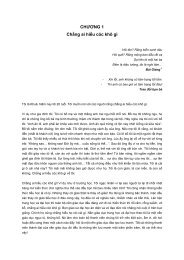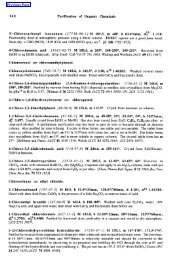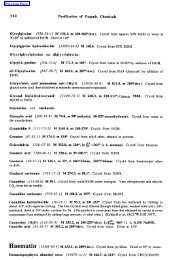Inconel 600.pdf
Inconel 600.pdf
Inconel 600.pdf
Create successful ePaper yourself
Turn your PDF publications into a flip-book with our unique Google optimized e-Paper software.
MMPDS-01<br />
31 January 2003<br />
6.1.1 MATERIAL PROPERTIES<br />
6.1.1.1 Mechanical Properties — The mechanical properties of the heat-resistant alloys are<br />
affected by relatively minor variations in chemistry, processing, and heat treatment. Consequently, the<br />
mechanical properties shown for the various alloys in this chapter are intended to apply only to the alloy,<br />
form (shape), size (thickness), and heat treatment indicated. When statistical values are shown, these are<br />
intended to represent a fair cross section of all mill production within the indicated scope.<br />
Strength Properties — Room-temperature strength properties for alloys in this chapter are based<br />
primarily on minimum tensile property requirements of material specifications. Values for nonspecification<br />
strength properties are derived. The variation of properties with temperature and other data or interest are<br />
presented in figures or tables, as appropriate.<br />
The strength properties of the heat-resistant alloys generally decrease with increasing temperatures<br />
or increasing time at temperature. There are exceptions to this statement, particularly in the case of agehardening<br />
alloys; these alloys may actually show an increase in strength with temperature or time, within a<br />
limited range, as a result of further aging. In most cases, however, this increase in strength is temporary and,<br />
furthermore, cannot usually be taken advantage of in service. For this reason, this increase in strength has<br />
been ignored in the preparation of elevated temperature curves as described in Chapter 9.<br />
At cryogenic temperatures, the strength properties of the heat-resistant alloys are generally higher<br />
than at room temperature, provided some ductility is retained at the low temperatures. For additional<br />
information on mechanical properties at cryogenic temperatures, other references, such as the Cryogenic<br />
Materials Data Handbook (Reference 6.1.1.1), should be consulted.<br />
Ductility — Specified minimum ductility requirements are presented for these alloys in the roomtemperature<br />
property tables. The variation in ductility with temperature is somewhat erratic for the heatresistant<br />
alloys. Generally, ductility decreases with increasing temperature from room temperature up to<br />
about 1200EF to 1400EF, where it reaches a minimum value, then it increases with higher temperatures. Prior<br />
creep exposure may also affect ductility adversely. Below room temperature, ductility decreases with<br />
decreasing temperature for some of these alloys.<br />
Stress-Strain Relationships — The stress-strain relationships presented are typical curves prepared<br />
as described in Section 9.3.2.<br />
Creep — Data covering the temperatures and times of exposure and the creep deformations of interest<br />
are included as typical information in individual material sections. These presentations may be in the form<br />
of creep stress-lifetime curves for various deformation criteria as specified in Chapter 9 or as creep<br />
nomographs.<br />
Fatigue — Fatigue S/N curves for unnotched and notched specimens at room temperature and elevated<br />
temperatures are shown in each alloy section. Fatigue crack propagation data are also presented.<br />
6.1.1.2 Physical Properties —Selected physical-property data are presented for these alloys.<br />
Processing variables and heat treatment have only a slight effect on these values; thus, the properties listed<br />
are applicable to all forms and heat treatments.<br />
6-3











